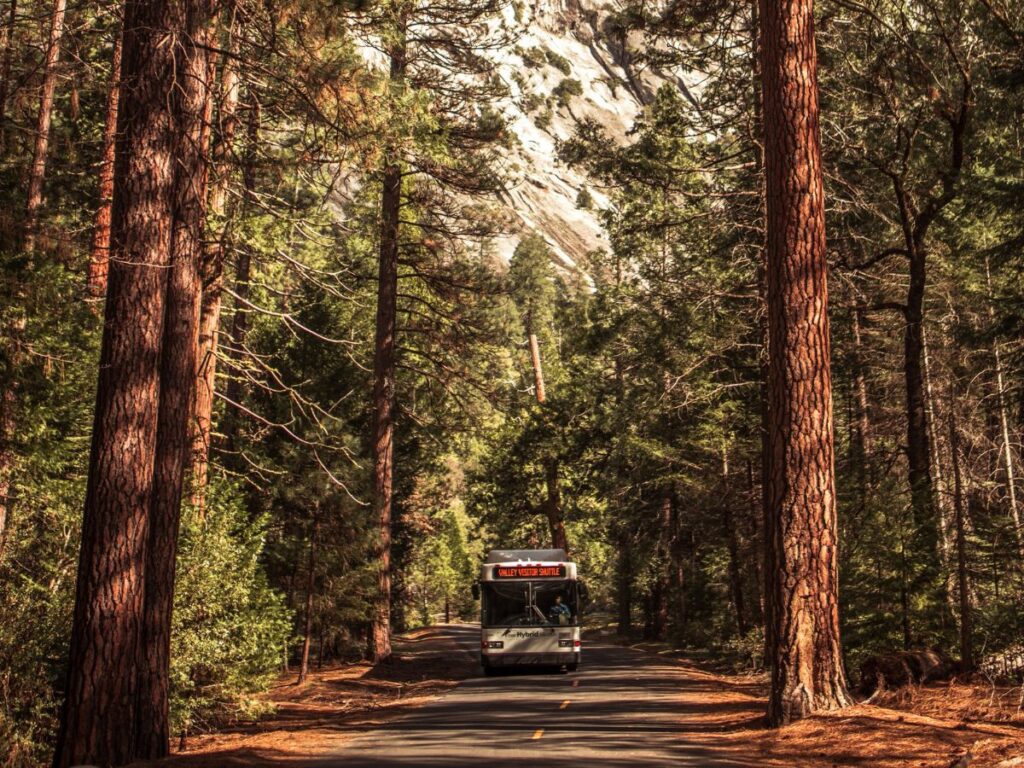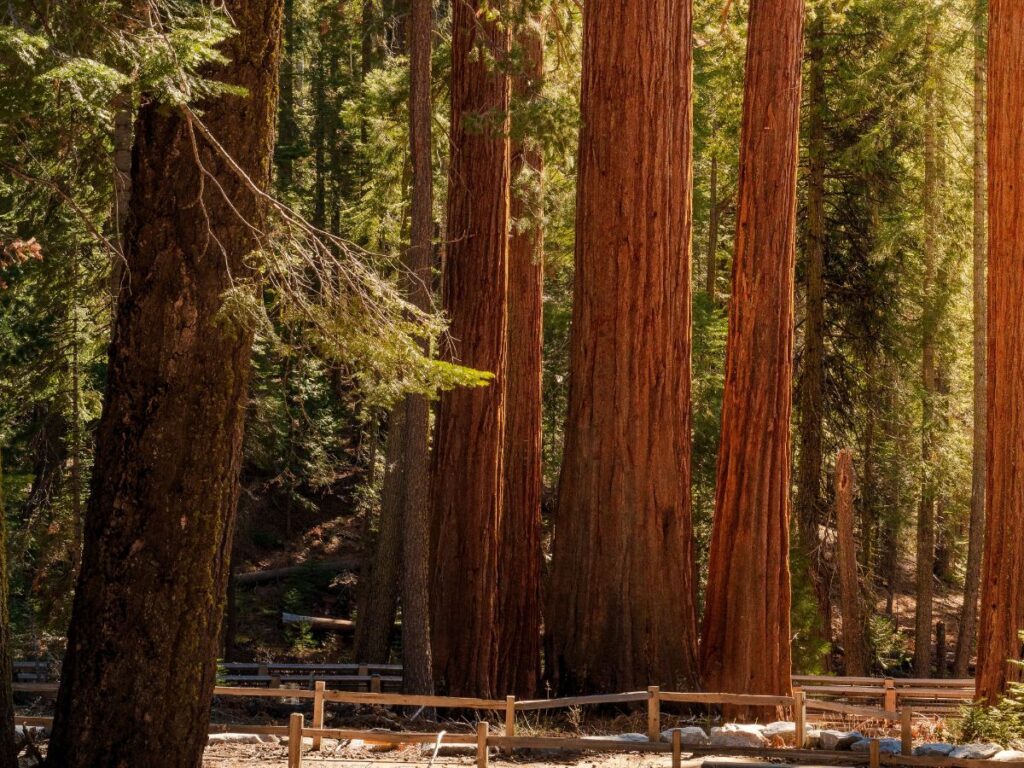Nestled within the majestic Sierra Nevada mountains of California lies the renowned Yosemite National Park. Spanning an impressive 1,187 square miles, this natural wonder boasts lush valleys, grand meadows, ancient giant sequoias, and breathtaking waterfalls, making it a beloved destination for millions of visitors annually.
When planning a visit to Yosemite, one of the key decisions to make is choosing the right entrance. The park has multiple entry points, each offering a distinct landscape and access to different attractions. Opting for the right entrance not only ensures a smoother journey but also enhances your overall park experience. In this guide, we’ll delve deep into the intricacies of the South Entrance, ensuring you’re well-equipped with all the essential details for your upcoming adventure.
Location and Accessibility
The South Entrance of Yosemite National Park is strategically positioned in the southern part of the park, offering access to some of the park’s most iconic landmarks. Geographically, it’s nestled near the park’s southern boundary, providing a gateway to the renowned Mariposa Grove of Giant Sequoias.
The entrance is not far from the historic town of Wawona. This town serves as an essential pit-stop for many travelers, offering essential services, lodging, and a peek into the park’s rich history. Moreover, the South Entrance is a considerable distance from the park’s more crowded Yosemite Valley, making it a choice for those looking to avoid peak crowds, especially during busy seasons.

Accessibility
Reaching the South Entrance can be achieved via several modes of transport:
- By Car: The most common way to reach the South Entrance is by car. It’s accessible via Highway 41, which connects the entrance to cities like Fresno to the south.
- By Shuttle: During peak seasons, Yosemite National Park offers shuttle services, which can be a convenient and environmentally friendly option for visitors.
- By Public Transport: While direct public transportation might be limited, there are bus services from nearby cities to the park, from which visitors can then drive or take a park shuttle to the South Entrance.
In terms of seasonal access and road conditions, it’s crucial to note that while the South Entrance is open year-round, the conditions can vary greatly. Winter months might see snowfall, making tire chains a requirement for those driving. It’s always advisable to check the park’s official website or contact park authorities for the most current road conditions and potential closures, especially if you plan to visit during the transitional weather months.
What to Expect at the Entrance
Embarking on a journey to Yosemite National Park is exhilarating, and as you approach the South Entrance, there are specific details and amenities you should be aware of to ensure a smooth and hassle-free entry.
Pass Options: For frequent visitors or those visiting multiple national parks, there are a few pass options available like America the Beautiful – The National Parks and Federal Recreational Lands Pass: This annual pass provides access to more than 2,000 federal recreation sites, including Yosemite.
Facilities
Once at the South Entrance, visitors can avail of a range of facilities designed for convenience and information:
- Visitor Centers: The nearby Wawona Visitor Center at the historic Hill’s Studio is a must-visit for newcomers. Here, visitors can access park information, maps, books, and exhibits about the cultural history of the park.
- Restrooms: Clean restroom facilities are available at the entrance, ensuring that visitors can freshen up before commencing their journey into the park.
- Parking: There is designated parking near the entrance, although it’s essential to note that during peak times, parking spaces might fill up quickly. It’s always a good idea to arrive early, especially during weekends and holidays, to secure a spot.
Routes and Trails
One of Yosemite National Park’s most treasured experiences is exploring its vast network of hiking trails. Whether you’re a novice looking for a gentle walk or a seasoned hiker seeking a challenging ascent, the area around the South Entrance offers something for everyone. Here’s a guide to help you find your ideal path.
Short Trails
Grizzly Giant Loop Trail: This trail, located in Mariposa Grove, offers visitors a chance to see some of the most iconic sequoias, including the Grizzly Giant and California Tunnel Tree. The trail is relatively flat, making it suitable for all ages.
Duration: Approximately 2 miles round trip.
Wawona Meadow Loop: Encircling the picturesque Wawona Meadow, this trail is particularly lovely in the spring when wildflowers are in bloom. It’s mostly level and offers a serene experience.
Duration: Around 3.5 miles round trip.
Swinging Bridge Trail: A short and family-friendly hike leading to a bridge that spans the South Fork of the Merced River, with a chance for some lovely river views and picnic spots.
Duration: Roughly 0.8 miles round trip.

Long Trails
Chilnualna Falls Trail: This moderately strenuous hike leads to the beautiful cascades of Chilnualna Falls. The trail climbs steadily and offers panoramic views of Wawona and the surrounding wilderness.
Duration: About 8.2 miles round trip.
Alder Creek Trail: Beginning from the south of Wawona, this trail offers a peaceful and less-traveled path to Alder Creek, with chances to spot wildlife and immerse in the serene environment.
Duration: Around 12 miles round trip.
Hiking Tips
- Always carry ample water, especially during hotter months. Remember that the longer and more strenuous the hike, the more water you’ll need.
- Sturdy hiking boots with good grip are essential. They’ll support your ankles and help prevent slips on uneven terrain.
- Yosemite’s weather can be unpredictable. Always check the forecast before setting out and be prepared for sudden changes.
- To protect the park’s delicate ecosystem and for your safety, always stick to designated paths.
- This includes a map, compass, first-aid kit, flashlight, and some basic food supplies like energy bars.
Attractions Near the South Entrance
Yosemite National Park’s South Entrance is a gateway to some of the park’s most iconic and cherished attractions. Its location provides convenient access to a mix of natural wonders and historical sites, ensuring a diverse and enriching experience for visitors.
Mariposa Grove
Mariposa Grove is home to over 500 mature giant sequoias, making it a forest of giants that stands testament to the ancient wonders of our planet. These colossal trees, some over 3,000 years old, command respect and awe from all who walk beneath their towering canopies.
While every tree in Mariposa Grove is a marvel, some notable residents include:
- Grizzly Giant: Estimated to be around 1,800 years old, it’s one of the largest trees in the grove.
- California Tunnel Tree: Carved in 1895 to allow horse-drawn carriages (and later automobiles) to pass through, it’s a testament to the sheer size of these natural wonders.
- The Faithful Couple: A rare instance where two trees have grown so closely together that their trunks have fused at the base.
Wawona
Wawona, situated within the park’s boundaries, serves as a historical and serene haven for visitors. With its roots tracing back to the 19th century, Wawona has been a restful stopover for weary travelers for generations.
Visitors to Wawona can indulge in various activities:
- Historic Wawona Hotel: A national historic landmark, this hotel offers a unique blend of modern luxury and preserved 19th-century charm.
- Pioneer Yosemite History Center: A collection of historic buildings, this center offers a step back in time to understand Yosemite’s past.
- Golfing: Wawona boasts a scenic nine-hole golf course, the only one within any national park.
- Hiking: Numerous trails, like the Swinging Bridge Trail, offer picturesque views and serene spots along the South Fork of the Merced River.
Other Attractions
- Chilnualna Falls: This series of cascades, totaling 690 feet, is accessible via a moderately challenging trail, offering breathtaking views.
- Tunnel View: A bit further but accessible from the South Entrance, it provides a panoramic view of Yosemite Valley, with El Capitan, Bridalveil Fall, and Half Dome in sight.
- Badger Pass Ski Area: In the winter, this becomes a hotspot for snow activities, including skiing and snowboarding.
With such a diverse range of attractions near the South Entrance, visitors are guaranteed an experience that combines natural beauty with rich history, ensuring a memorable trip through this section of Yosemite National Park.

Hurdles to Consider
A trip to Yosemite National Park, particularly through the South Entrance, is a dream for many. However, like any popular and vast natural area, there are certain challenges that visitors might face. Being aware of these potential hurdles can significantly enhance the overall experience by ensuring you’re well-prepared.
Crowd Levels
The allure of Yosemite attracts millions every year, which can lead to fluctuations in crowd sizes.
- Spring and Early Summer (May to July): This is when the waterfalls are at their peak, leading to higher visitor numbers. Expect crowded viewpoints and busy trails.
- Late Summer to Early Fall (August to October): While the crowd slightly thins out, it remains a popular time due to pleasant weather. The South Entrance and nearby attractions like Mariposa Grove can still be quite busy.
- Winter (November to April): The crowd is at its lowest, but certain areas may be inaccessible due to snow.
Weather Conditions
Weather in Yosemite can be as varied as its landscapes. It’s essential to be prepared for its unpredictable nature.
- Spring: A mix of rain and sunshine. Snow can still be present at higher elevations.
- Summer: Warm days but cool nights. Occasional thunderstorms can arise, especially in the afternoons.
- Fall: Crisp air and changing foliage. The weather begins to cool significantly towards the end of the season.
- Winter: Snow is common, making some areas inaccessible. It’s essential to check road conditions and closures.
Animal Safety
Yosemite is home to various wildlife, from squirrels to bears. Here are some safety tips:
- Always maintain a safe distance from all wildlife. Never approach or feed them.
- Use bear-proof food storage containers and lockers. This prevents bears and other animals from associating humans with food.
- Be especially cautious at dawn and dusk when many animals are most active.
- This can deter wildlife from approaching. If you do encounter a larger animal, such as a bear or mountain lion, make noise to make your presence known and never run.
Tips for a Successful Visit
Embarking on a journey to the scenic realms of Yosemite National Park through its South Entrance is a dream come true for many travelers. To ensure your visit is as enriching as you’ve imagined, some pre-planning and thoughtful consideration can go a long way. Here are a few expert tips to enhance your Yosemite experience.
Best Time to Visit
While Yosemite showcases its charm throughout the year, your ideal visit time may vary based on your interests:
- Spring (April to June): Experience the park’s waterfalls at their fullest and witness wildflowers in bloom. However, prepare for mixed weather conditions, from warm sunny days to chilly rain.
- Summer (July to August): A popular time due to warmer temperatures. It’s ideal for high-elevation hiking, but anticipate larger crowds.
- Fall (September to October): If you relish cooler temperatures, fewer crowds, and the beauty of autumn leaves, this is a great time.
- Winter (November to March): Perfect for those who love snowy landscapes. Keep in mind some areas may be closed or difficult to access.

Things to Pack
Preparation is crucial. Here’s a general packing list:
- Layered clothing is recommended. Include a waterproof jacket, warm hat, and gloves, especially for the cooler months.
- Sturdy, comfortable hiking boots with good grip. For winter, snow boots may be necessary.
- If camping, bring a tent, sleeping bag suited for the season, and a camping stove.
- A detailed map of the park and a compass. While GPS is helpful, don’t rely solely on it.
- First-aid kit, extra food and water, a multi-tool, and a flashlight with extra batteries.
Reservation Requirements
Yosemite, given its popularity, has certain reservation requirements to manage the influx of visitors and protect its delicate ecosystem:
- Camping Reservations: Highly recommended if you plan to camp, especially during peak season. Some campgrounds near the South Entrance, like Wawona, can fill up quickly.
- Wilderness Permits: If you’re considering backpacking overnight in the park’s wilderness, you’ll need a wilderness permit. These are limited and in high demand, so early reservations are advised.
- Entrance Reservations: During specific peak times, the park might implement an entrance reservation system to manage crowd levels. Always check the official Yosemite National Park website for the most recent information before your visit.
Key Takeaways
- The South Entrance is a crucial access point to Yosemite, and choosing the right park entrance is essential for trip planning.
- The South Entrance’s geographical context is near towns like Oakhurst, and while accessible year-round, seasonal changes can affect road conditions.
- Be prepared for entrance fees and make use of facilities like visitor centers, restrooms, and parking available at the South Entrance.
- Must-visit attractions include the Mariposa Grove, home to ancient giant sequoias, and the historic Wawona area.
- Both short and long trails are available, with notable ones being the Grizzly Giant Loop Trail and the Chilnualna Falls Trail.
- Visitors should anticipate varying crowd levels based on season, be prepared for unpredictable weather patterns, and practice animal safety.
- The best visit experience is during spring and fall, packing appropriately is crucial, and reservations for camping and potential entrance might be required.
